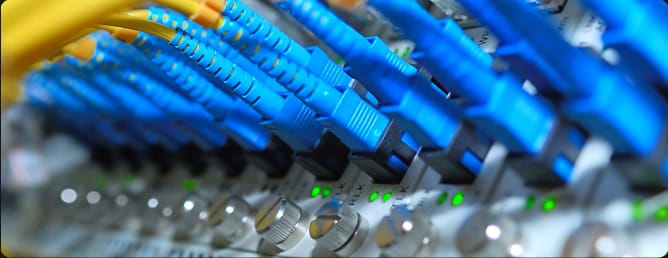William Rinehart: Why the Democrats $40 Billion Broadband Deployment Plan Misses the Mark
Democratic leadership in both the House and Senate recently released a plan for broadband deployment that would spend $40 billion in taxpayer money in an effort to get everyone online. Like many other proposals of this nature, however, it lacks in the very specifics that are so important in broadban
Will Rinehart

Democratic leadership in both the House and Senate recently released a plan for broadband deployment that would spend $40 billion in taxpayer money in an effort to get everyone online. Like many other proposals of this nature, however, it lacks in the very specifics that are so important in broadband policy.
First, as the Federal Communications Commission (FCC) notes, the plan would not extend access to all Americans. Second, the plan makes a false equivalence between rural electrification and rural broadband. In fact, the rural electrification was accomplished through a loan program, while proposals for broadband are organized as grants.
Finally, the plan misidentifies the problem it is trying to solve. It assumes that the problem with broadband is one of availability, when there is significant evidence that demand plays just as large of a role. Rather than simply throwing money at the problem, policymakers should focus on making the technology relevant.
Cost Estimations Are Likely Off the Mark
In suggesting that the United States needs a “Roosevelt Plan” for broadband, the proposal aims to “connect every American to high-speed, reliable Internet by providing direct federal investments to deliver the highest quality internet access at the lowest price.” In total, nearly $40 billion would be spent to obtain this goal. While it is not directly linked in the document, this is the cost estimated by Paul de Sa, Chief of the Office of Strategic Planning & Policy Analysis at the FCC.

Even this projection has some serious caveats which are not included in the plan, the most important of which is that it would not cover every American. As de Sa notes, “the total upfront capex required to deploy FTTP [Fiber to the Premise] to the 14% of locations lacking access would be ~$80b but, because of the shape of the cost curve, ~98% coverage could be attained for ~$40b.” To reach that last 2 percent, the estimated program costs nearly double. In other words, even if $40 billion was spent, there would still be nearly 6.5 million people without access to broadband.
These numbers are also based on an assumption that either fiber or cable will be the last mile technology, ruling out telephone-based technologies, fixed wireless, and satellite. In less dense urban and rural communities, telephone networks are being upgraded and provide a path towards superfast internet.
Indeed, the next generation of technology, known as G.fast, will give network operators the ability to support gigabit speeds over twisted pair copper or coax wiring. Among other problems in the previous Wheeler FCC, his administration consistently discounted DSL, fixed wireless and other edge technologies in broadband deployment. These models and the cost estimates reflect that bias.
Comparison to Rural Electrification Act
In arguing for this buildout, the Better Deal plan suggests that rural broadband deployment is just an extension of the Rural Electrification Act (REA), a 1936 program to build electricity infrastructure in rural U.S. areas. While the programs are similar in that they aim to provide rural communities with new technology, the similarities largely end there.
REA was a loan program. Most current broadband proposals, on the other hand, are grant programs. As the 1937 Report of Rural Electrification Administration noted, there is quite a difference in establishing loans at fixed 20-year terms at 2.88 percent interest as compared to block grants that will help build out a broadband network.
Most important, the REA was actively involved in reducing the price of electricity to achieve economies of scale in rural areas. The REA created an engineering department that helped to lower the cost of electricity lines and construction methods. As REA administrators noted, “Sometimes a difference of a fraction of a cent per kilowatt hour in the wholesale rate will represent the difference between a sound and unsound project.”
By 1939, the Rural Electrification Administration reported that the cost of building rural electricity lines decreased more than $500 per mile, or over a third of the cost. Nothing of the sort is included in this Better Deal.
Demand
While there are varying figures on the cost of broadband deployment, an underlying problem is that there is too much focus on supply and not enough on demand. Currently, the FCC puts an emphasis on the percentage of Americans with broadband coverage. This is an overly simplistic way to look at broadband deployment.
In 2015, Cornell University’s Community & Regional Development Institute studied the impact of broadband deployment on rural communities. It found that Internet access correlated with economic growth, but only when people adopted broadband. When they measured broadband availability (simply having the Internet infrastructure), there was little correlation. Availability and adoption are two completely different concepts. For people to benefit from the Internet, they need to use it.
As AAF has noted before, federal government efforts to expand availability of broadband will not be as effective as those efforts to get state and local players to help spark broadband adoption.
Editor’s Note: The views expressed in this commentary do not necessarily represent the views of BroadbandBreakfast.com. Other commentaries are welcome, at commentary@broadbandcensus.com.
(Photo of fiber connections by Tmthetom used with permission.)










Member discussion